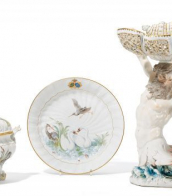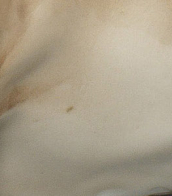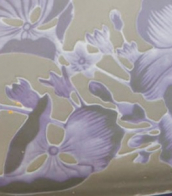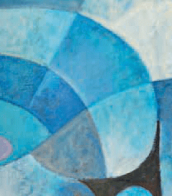händler werden


Carl Spitzweg was a German romanticist painter, especially of genre subjects. He is considered to be one of the most important artists of the Biedermeier era.


Johann Joachim Kändler was a German sculptor and porcelain artist best known for his role in transforming European porcelain, particularly through his work at the Meissen porcelain factory. His sculptures and figurines, characterized by their natural motifs and intricate details, significantly impacted the porcelain industry.
Kändler's early works often depicted elements from nature, with his bird sculptures—such as those of jays and woodpeckers—being particularly notable. As his career evolved, he delved into smaller decorative figures, such as those from the "Swan Service," a collection of detailed and delicate porcelain pieces. Kändler also drew inspiration from the commedia dell'arte, a popular form of theater, creating vibrant figurines that captured the spirit of this genre. His "Monkey Band" from 1753 is an enduring piece still celebrated today.
Throughout his career, Kändler produced over a thousand different items, many of which are now considered timeless masterpieces in European porcelain art. You can find his works in museums and galleries, such as the British Museum, Seattle Art Museum, and The Metropolitan Museum of Art. Some pieces are even available for auction or sale, often fetching high prices due to their rarity and artistic significance.
If you'd like to learn more about Johann Joachim Kändler or stay updated on related sales and auctions, you can subscribe to our newsletter for timely information and insights into his works.


Frans Francken the Younger was a distinguished Flemish painter of the Baroque period, celebrated for his versatility and innovation in the art scene of the early 17th century. Born in 1581 in Antwerp, where he also died in 1642, Francken hailed from the prolific Francken family of artists, establishing himself as the most prominent among them. His contribution to Flemish art includes a wide array of subjects, spanning large altarpieces for churches to intricate cabinet pictures featuring historical, mythological, or allegorical themes.
Francken's work is particularly noted for his creation of collectors' cabinet paintings, a genre that depicted the interiors of collectors filled with art, curiosities, and natural specimens, embodying the era's intellectual pursuits and the burgeoning culture of connoisseurship. Moreover, Francken was instrumental in the development of singeries, humorous paintings featuring monkeys engaging in human activities, critiquing the follies of mankind through satire. His collaborative efforts with other artists enriched his work, allowing him to incorporate figures and narrative depth into various compositions, seamlessly blending his expertise with the landscapes, architectural settings, and still lifes created by his contemporaries.
Francken's artistic legacy is marked by his successful workshop, his role as a master in the Antwerp Saint Luke's Guild, and his significant influence on the development of new subject matter and genres within Flemish painting. His works, such as "Mankind's Eternal Dilemma: The Choice Between Virtue and Vice," remain celebrated for their detailed craftsmanship and symbolic richness, housed in prestigious museums including the Museum of Fine Arts, Boston.
For collectors and art history aficionados, Francken's oeuvre offers a rich tapestry of Baroque artistry, reflecting the dynamism of 17th-century Flemish culture and the depth of humanistic and religious themes explored during the period.
To delve deeper into the world of Frans Francken the Younger and to stay updated on new discoveries, sales, and auction events related to his works, consider signing up for specialized updates. This subscription is tailored for enthusiasts eager to explore the intersections of art, history, and culture, promising insightful content on one of Flemish art's most influential figures.





















































































